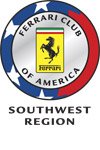
Physics of Racing - Part 10: Grip Angle
By: Brian Beckman
In many ways, tire mechanics is an unpleasant topic. It is shrouded in uncertainty, controversy, and trade secrecy. Both theoretical and experimental studies are extremely difficult and expensive. It is probably the most uncontrollable variable in racing today. As such, it is the source of many highs and lows. An improvement in modeling or design, even if it is found by lucky accident, can lead to several years of domination by one tire company, as with BF Goodrich in autocrossing now. An unfortunate choice of tire by a competitor can lead to frustration and a disastrous hole in the budget.This month, we investigate the physics of tire adhesion a little more deeply than in the past. In Parts 2, 4, and 7, we used the simple friction model given by F < uW, where F is the maximum traction force available from a tire; u, assumed constant, is the coefficient of friction; and W is the instantaneous vertical load, or weight, on a tire. While this model is adequate for a rough, intuitive feel for tire behavior, it is grossly inadequate for quantitative use, say, for the computer program we began in Part 8 or for race car engineering and set up.
I am not a tire engineer. As always, I try to give a fresh look at any topic from a physicist?s point of view. I may write things that are heretical or even wrong, especially on such a difficult topic as tire mechanics. I invite debate and corrections from those more knowledgeable than I. Such interaction is part of the fun of these articles for me.
I call this month?s topic "grip angle." The grip angle is a quantity that captures, for many purposes, the complex and subtle mechanics of a tire. Most writers call this quantity `slip angle.? I think this name is misleading because it suggests that a tire works by slipping and sliding. The truth is more complicated. Near maximum loads, the contact patch is partly gripping and partly slipping. The maximum net force a tire can yield occurs at the threshold where the tire is still gripping but is just about to give way to total slipping. Also, I have some difficulties with the analyses of slip angle in the literature. I will present these difficulties in these articles, unfortunately, probably without resolution. For these reasons, I give the quantity a new name.
A tire is an elastic or deformable body. It delivers forces to the car by stretching, compressing, and twisting. It is thus a very complex sort of spring with several different ways, or modes, of deformation. The hypothetical tire implied by F < uW with constant u would be a non-elastic tire. Anyone who has driven hard tires on ice knows that non-elastic tires are basically uncontrollable, not just because u is small but because regular tires on ice do not twist appreciably.
The first and most obvious mode of deformation is radial. This deformation is along the radius of the tire, the line from the center to the tread. It is easily visible as a bulge in the sidewall near the contact patch, where the tire touches the ground. Thus, radial compression varies around the circumference.
Second is circumferential deformation. This is most easily visible as wrinkling of the sidewalls of drag tires. These tires are intentionally set up to deform dramatically in the circumferential direction.
Third is axial deformation. This is a deflection that tends to pull the tire off the (non-elastic) wheel or rim.
Last, and most important for cornering, is torsional deformation. This is a difference in axial deflection from the front to the back of the contact patch. Fundamentally, radial, circumferential, and axial deformation furnish a complete description of a tire. But it is very useful to consider the differences in these deflections around the circumference.
Let us examine exactly how a tire delivers cornering force to the car. We can get a good intuition into the physics with a pencil eraser. Get a block eraser, of the
For a complete look at Sempre Ferrari, you may want to check out the rest of the articles from Volume 3, Issue 4 - June/July 1996
